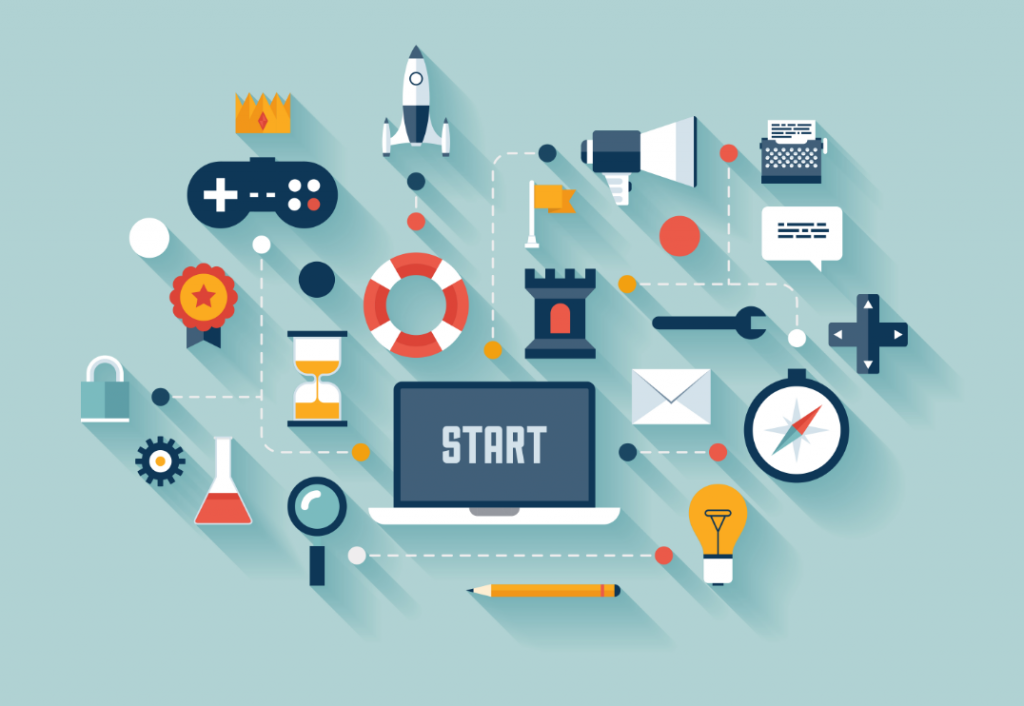In today’s competitive marketplace, businesses are constantly seeking innovative ways to capture and maintain customer attention. One such strategy that has gained significant traction is gamification. By incorporating game-like elements into non-gaming contexts, companies can create engaging experiences that motivate customers to interact with their brand. This blog explores the role of gamification in customer engagement, its benefits, and how to implement it effectively.

Table of Contents
ToggleWhat is Gamification?
Gamification refers to the application of game design elements in non-game environments to enhance user engagement, motivation, and participation. It often includes features such as points, badges, leaderboards, challenges, and rewards. By tapping into customers’ intrinsic motivations, gamification makes interactions more enjoyable and encourages ongoing participation.
Why Gamification Matters for Customer Engagement
- Increased EngagementGamification transforms mundane tasks into engaging experiences. When customers feel like they are part of a game, they are more likely to interact with the brand, whether it’s completing a purchase, sharing content, or participating in surveys. By adding elements of competition or achievement, brands can keep customers invested in their activities.
- Enhanced MotivationGame mechanics can motivate customers to take specific actions. For example, earning points for every purchase or receiving badges for completing tasks creates a sense of accomplishment. This motivation can drive customers to engage more frequently with the brand, ultimately leading to higher retention rates.
- Fostering Community and CompetitionGamification often encourages social interaction among users. Leaderboards and challenges can foster a sense of community and friendly competition. Customers can compare their progress with others, share achievements on social media, and invite friends to join in the fun. This communal aspect enhances brand loyalty and can lead to increased word-of-mouth marketing.
- Improved Learning and RetentionGamification can facilitate learning by making information more digestible and engaging. For example, brands can create quizzes or interactive tutorials that reward users for completing educational tasks. This approach not only improves knowledge retention but also helps customers feel more connected to the brand.
- Personalized ExperiencesMany gamification strategies allow for customization based on user preferences. By tailoring challenges, rewards, and experiences to individual users, brands can create a more personalized engagement strategy. This enhances the customer experience and fosters deeper connections with the brand.
Successful Examples of Gamification
- Starbucks Rewards ProgramStarbucks’ loyalty program is a prime example of gamification. Customers earn stars for every purchase, which can be redeemed for free drinks and food. The program includes tiers that offer additional benefits, encouraging customers to engage more frequently to achieve higher status.
- Nike Run ClubNike’s app includes gamified elements such as challenges, badges, and leaderboards. Users can compete with friends, track their running progress, and earn rewards for achieving fitness goals. This gamified approach not only motivates users to run more but also fosters a sense of community among athletes.
- DuolingoDuolingo uses gamification to make language learning fun and engaging. The app incorporates points, levels, and daily challenges that keep users motivated. The competitive aspect of streaks and leaderboards encourages users to practice regularly, enhancing their language skills over time.
How to Implement Gamification in Your Customer Engagement Strategy
- Identify Your GoalsStart by defining your objectives for implementing gamification. Are you looking to increase customer retention, drive sales, or enhance brand awareness? Clearly defined goals will help shape your gamification strategy.
- Know Your AudienceUnderstand your target audience’s preferences and motivations. Different demographics may respond differently to gamification elements. Conduct surveys or focus groups to gather insights into what would resonate with your customers.
- Choose the Right Game MechanicsSelect game mechanics that align with your goals and audience. Some popular elements include:
- Points and Rewards: Encourage participation by rewarding customers for completing tasks or engaging with your brand.
- Badges and Achievements: Recognize milestones and achievements to motivate customers to reach new levels.
- Leaderboards: Foster competition by displaying top performers, encouraging customers to engage more frequently.
- Challenges and Quests: Create specific tasks or challenges that customers can complete for rewards or recognition.
- Create an Engaging ExperienceDesign your gamified experience to be visually appealing and easy to navigate. Ensure that the mechanics are intuitive and enhance the customer journey rather than complicating it.
- Monitor and AdaptRegularly analyze the performance of your gamification strategy. Use metrics such as engagement rates, customer feedback, and conversion rates to assess its effectiveness. Be prepared to make adjustments based on user behavior and preferences.
Conclusion
Gamification is a powerful tool for enhancing customer engagement in today’s digital landscape. By incorporating game-like elements into your marketing strategy, you can create enjoyable and motivating experiences that capture customer attention and drive loyalty. As consumers continue to seek more interactive and rewarding interactions with brands, leveraging gamification will become increasingly essential for businesses aiming to stand out in a crowded marketplace. Embrace the power of gamification, and watch your customer engagement soar!


No responses yet